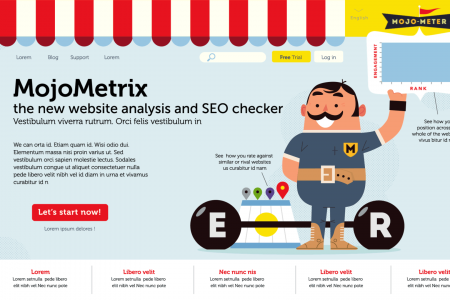
The SEO Friendly CMS Checklist
The SEO Friendly CMS Checklist By Aleyda Solis | @aleyda What are the criteria to choose a SEO Friendly CMS? Crawlability Indexability Relevancy Web Architecture Internal Linking seo cms Crawlability & Indexability Web Standards: Has clean, layer based HTML code, with externalized CSS and JS and easily allows to use Microdata with Schema. Format: Avoid Flash, Frames or Javascript to show relevant content. Canonical Tag: Lets you include and configure canonical tags in pages to avoid duplicated content. Robots.txt: Allows to create and edit the robots.txt archive to control search engines access to the site. Meta Robots: Lets you add the meta robots tag in pages head to disable indexing and following links. Sitemap.xml: Automates the sitemap.xml generation and update it with the site content (text, images, video, mobile, news, geo). RSS: Generates RSS Feeds automatically for new pages. Size & Speed: Optimizes and minimizes code, requests and images and allows caching to improve speed and site performance. Redirections: Lets you easily 301 redirect pages, avoiding content duplication or cannibalization issues. Security: Provides security features to protect from web spam attacks. Relevancy Title Tag: Allows to personalize and optimize the title tag for each page and to set rules to automatize its content with patterns. Meta Description: Lets you personalize the meta description information for each page and set rules to automatize it with patterns. Heading Tags: Includes heading tags for each page that you can modify and optimize. Text Content: Allows to include enough unique text content for each page. Images: Lets you set a relevant, personalized alt description, caption, archive name and size. UGC: Allows you to easily enable comments, Q&A or reviews in post or articles, great to update pages with fresh content. Multilanguage Support: Lets you enable different language versions with a relevant, optimized URL structure and hreflang attribute. 3 Web Architecture & Internal Linking URLS: Editable, relevant, descriptive, user friendly, hierarchically organized URLS, in the same language of the page content. Internal Linking: In the content and text based menu with hierarchical links (with customizable anchor texts) to relevant pages. Categorization: Features a consistent, hierarchical organized, customizable categorization system for the site content. Pagination: Allows to control pagination to avoid content duplication and adds the rel=next and prev attributes. Content Duplication: Shows each piece of content through only one URL. 4 Additional Functionalities Code Customization: Easily allows to edit the pages code. Look & Feel: Enables you to modify and personalize the look and feel through WY YG editors and CSS. Analytics: Lets you add Web analytics code and tags to measure site activity. Social: Includes social buttons and features to share content in external communities and platforms. Backups: Lets you perform frequent and schedulable backups. Update: Provides frequent platform updates with fixes and new features. Export: Allows you to easily export site content and configuration. Plugins & Extensions: Features a rich plugin and extension ecosystem to easily extend the site features. Which are the most popular SEO Friendly CMS? Joomla! Drupal www.wordpress.org www.joomla.org drupal.org Infographic by Aleyda Solis - SEO Consultant | Twitter: @aleyda | Web: www.aleydasolis.com DDDDDDDDDD
The SEO Friendly CMS Checklist
Source
Unknown. Add a sourceCategory
Social MediaGet a Quote











